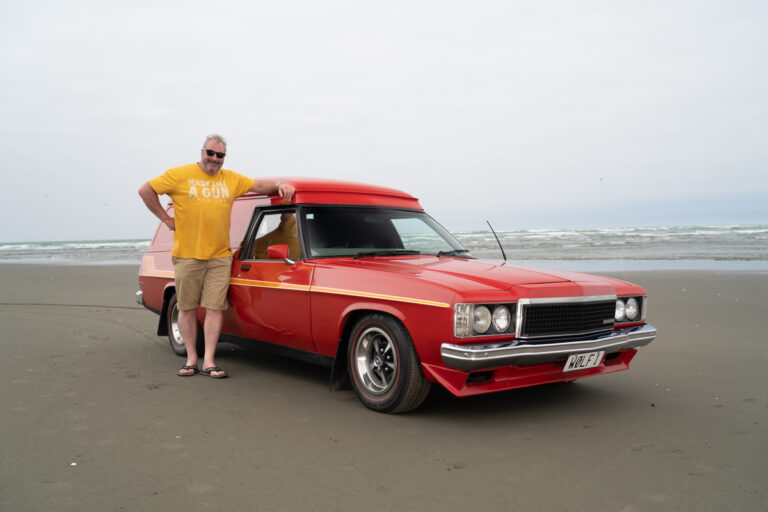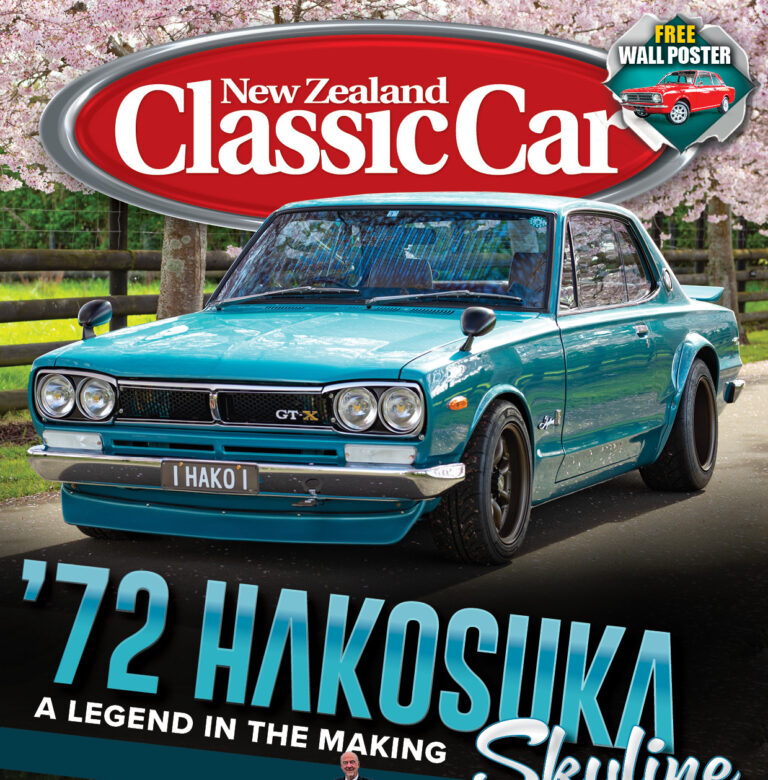data-animation-override>
“John Nicholson is yet another high achiever who is largely anonymous — just the way he likes it”
A good friend of mine has a great line when people start name-dropping — he’ll quietly wait until the right moment and then say, “When I had lunch with Prince Charles the other day …” As you may have guessed, I’m about to do some name-dropping.
Let’s flash back to February 2004, the Canterbury Car Club had finally managed to get Tish and Chris Amon to be its guests at the annual ‘Classic’ weekend. Toyota had come to the party and lent us a Prado so I could chauffeur them about. We were due to leave the hotel soon after breakfast to head out to Ruapuna, and waiting in reception were Amanda McLaren and her husband-to-be, Stephen Donnell — both would be joining us.
Over breakfast it occurred to me that, although I’d been to Ruapuna many times, I’d never actually driven there. I headed out to reception five or so minutes before we were due to leave, just to make sure I wasn’t going to be taking these famous names to the car races via Amberley. The girl at reception had never heard of Ruapuna and, as I was trying to quickly formulate Plan B, a voice quietly said, “You want to go to Ruapuna? It’s right out of here …” I thanked him, and he told me he’d been the day before for the first time since 1969. He admired the Donington shirt I was wearing and said, “You’re obviously a fan — here’s my card, please look me up when you’re next in England.”

By now the Amons had arrived, and I realized the man providing the directions was John Nicholson — engine builder, racing car driver, powerboat racing champion. “John, you’ll of course know Chris …” but I assumed incorrectly. So here, in the reception of the Russley Hotel, I introduced two of the eight New Zealanders to ever start a Formula 1 Grand Prix to one another. Seconds later I introduced John to the daughter of the man he first worked for after leaving these shores in 1969 — none of which would have happened had the lass at reception been a motor racing fan.
There is a further twist to this story. Over the holiday period I typically plan my NZ Classic Car articles for the next 12 months. Being 2004, I worked through the various deeds of Kiwis in years ending in a four — I knew Emerson Fittipaldi had won McLaren’s first World Championship, and that the Cosworth DFV that had powered him that day was built by ‘Nicholson McLaren’ — October 6, 1974. A wee bit more research, and I discovered that on that very same day, John Nicholson secured the British Formula Atlantic championship at the final round.
I figured this had the makings of a story, but I’d never met ‘Johnny Nick’ and so had no idea how he’d respond to an email from an unknown from his homeland. That was resolved when I asked my mate Bob McMurray if he happened to know McLaren’s old engine builder — “Know him? I was his mechanic when he won that championship.” Now we were getting somewhere — an email was sent, and when I mentioned all of this to John his near-instant response was, “Why would anyone be interested in reading about me?” I say near instant, because his wife added, “Do you know what else was special about the 6th of October? It’s John’s birthday!”
Serious contender
In the many years I’ve been writing about New Zealand motor racing history, if there was a single common thread amongst the drivers, it is an almost reluctance to consider their deeds to have been anything special — and if there was a prize for the ‘most modest’, Johnny Nick would be a serious contender. Typical of engineers, his interest is in what the next development will be — what happened in previous decades is largely irrelevant. We discovered his home while in New Zealand over our summer was fairly close to mine, and we met to try and get him to talk history. I’m delighted to say we’ve remained in email contact ever since. The British Formula Atlantic championship title in 1974 wasn’t John’s first as a driver — but it was easily the most significant. After being introduced into the UK in 1971, Formula Atlantic developed quickly and there was even talk of it taking over from Formula 3 which, at the time, was struggling. By 1973 there were two championships and in 1974, John won the more prestigious of them — the John Player–sponsored series where he beat future Indy 500 hero Jim Crawford, Tony Brise (one of Britain’s ‘lost generation’ of young stars who died young), and a certain Alan Jones.
Formula Atlantic was booming, but by 1975, F3 was getting it together, and in 1976 the Atlantic series imploded in Britain. The halcyon years were 1973 and 1974 — drivers had the choice of chassis from such as March, Lola and Chevron while everyone used the ubiquitous Ford BDD. Johnny Nick’s BDD was, naturally, built by Nicholson McLaren, but instead of being in the back of a ‘mainline’ manufacturer’s tub, John used a chassis from the tiny Lyncar company. The combination worked perfectly — in the more prestigious six-round Yellow Pages championship he won twice but finished runner-up to Colin (son of Tony/Vanwall) Vandervell. However, he dominated the 18-round BP-sponsored championship with five wins. This gave him seven wins across both championships — the next most victorious driver having five wins.
It was a great improvement for John and Lyncar — in 1972 they’d finished a distant third but with only one win. In 1973, of those seven wins, the best was undoubtedly at the British Grand Prix where the Kiwi prevailed by less than a second after 15 fantastic laps.
And here’s a quiz question for you — there were two other New Zealanders in the top 10 that day, answers on the back of a postcard!
Photo: Terry Marshall


